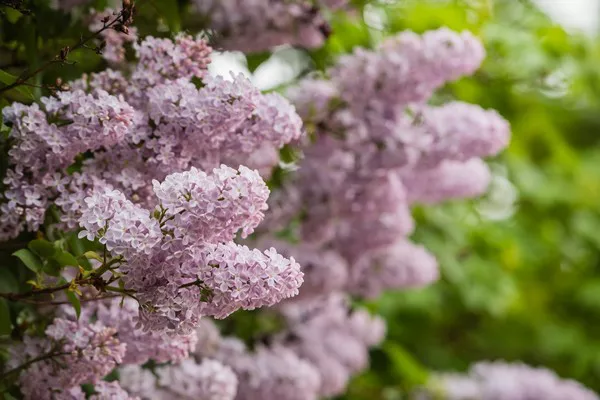Gardens are not only visual feasts but also vibrant ecosystems that attract a variety of visitors, including the enchanting dragonfly. These winged wonders not only contribute to the garden’s natural balance but also add a touch of magic to the landscape. If you’re looking to create a dragonfly haven in your garden, understanding the types of flowers that attract these aerial acrobats is key.
The Dragonfly’s Relationship with Flowers
Dragonflies, with their iridescent wings and agile flight, are not only captivating to watch but also play a crucial role in maintaining a balanced ecosystem. While they are not pollinators like bees or butterflies, dragonflies are valuable predators that help control the population of mosquitoes and other pests. Like many creatures in nature, dragonflies rely on the resources provided by flowers, primarily nectar, to fuel their high-energy flights and activities.
Flower Characteristics That Attract Dragonflies
Dragonflies are discerning visitors when it comes to choosing their nectar sources. Here are some flower characteristics that are particularly attractive to these aerial acrobats:
Open, Flat Blooms: Dragonflies prefer flowers with open and flat blooms that provide a stable landing platform. These types of flowers make it easier for dragonflies to access nectar and navigate their surroundings.
Bright Colors: Dragonflies are attracted to vibrant and bright colors, especially shades of blue, purple, and pink. Flowers with these hues stand out in the garden and catch the attention of passing dragonflies.
Sweet Fragrances: Fragrance plays a significant role in attracting dragonflies. Flowers with sweet, pleasant scents can lure these insects from a distance, guiding them to a potential nectar source.
Continuous Blooming: Dragonflies are active during the warmer months, so flowers that bloom continuously throughout the season provide a reliable food source. A garden with a variety of flowers that bloom sequentially can attract dragonflies over an extended period.
Dragonfly-Friendly Flowers: A Comprehensive List
Bee Balm (Monarda): With its showy, tubular flowers in shades of red, pink, and purple, bee balm is a favorite among dragonflies. It provides a substantial nectar source and is known for attracting various pollinators.
Liatris (Blazing Star): Liatris, or blazing star, features tall spikes of fluffy, lavender-purple blooms. These flowers are not only visually appealing but also rich in nectar, making them attractive to dragonflies and other pollinators.
Salvia: Salvia, with its spiky clusters of tubular flowers, is a popular choice for dragonflies. Varieties like ‘Black and Blue’ or ‘Victoria Blue’ with deep blue or purple flowers are particularly attractive.
Butterfly Bush (Buddleja): Despite its name, the butterfly bush is equally enticing to dragonflies. With its long, cone-shaped blooms, this shrub produces copious amounts of nectar and is available in various colors.
Coneflower (Echinacea): Coneflowers are not only known for their medicinal properties but also for their appeal to dragonflies. The daisy-like blooms, often in shades of purple and pink, are a favorite among these insects.
Daylily (Hemerocallis): Daylilies, with their trumpet-shaped flowers, are not only low-maintenance but also attract dragonflies. They come in a variety of colors, offering options to suit different garden aesthetics.
Joe-Pye Weed (Eutrochium): This native perennial produces large, domed clusters of tiny flowers in shades of pink or purple. Joe-Pye weed is a favorite among dragonflies and provides ample nectar.
Iris: Irises, with their striking sword-like leaves and elegant blooms, are known to attract dragonflies. Choose varieties in shades of blue, purple, or white for optimal appeal.
Pickerel Weed (Pontederia cordata): Growing near water, pickerel weed is an aquatic plant with spikes of lavender-blue flowers. Dragonflies are often spotted hovering around these blooms, making them an excellent addition to water gardens.
Catmint (Nepeta): Catmint is a fragrant and low-maintenance herb that produces spikes of lavender-blue flowers. Its extended blooming period makes it a reliable nectar source for dragonflies.
Phlox: With its abundant clusters of fragrant flowers, phlox is a popular choice for attracting dragonflies. Choose varieties in shades of purple or pink to maximize their allure.
Water Lily (Nymphaea): If you have a water feature in your garden, consider adding water lilies. These aquatic plants with floating leaves and vibrant blooms provide both aesthetic beauty and attract dragonflies.
Creating a Dragonfly-Friendly Garden
To attract dragonflies to your garden, consider the following tips:
Provide Water Sources: Dragonflies need water for breeding and hunting. Incorporate water features such as ponds, birdbaths, or shallow containers with clean water to create an inviting habitat.
Avoid Pesticides: Dragonflies are highly sensitive to pesticides. Opt for natural and organic pest control methods to keep your garden healthy without harming these beneficial insects.
Plant in Clusters: Planting flowers in clusters or groups can make them more visible to dragonflies. It also creates a concentrated area of nectar sources, making it easier for these insects to feed.
Include Varied Blooming Periods: Ensure that your garden has flowers blooming at different times throughout the season. This provides a continuous supply of nectar, attracting dragonflies from spring to fall.
Provide Resting Spots: Dragonflies enjoy perching on sunny spots to bask and survey their surroundings. Place flat stones or other surfaces in sunny areas to provide resting spots for these agile fliers.
Observing and Identifying Dragonflies
Once you’ve successfully attracted dragonflies to your garden, take the opportunity to observe and identify different species. Dragonflies come in various colors and sizes, and each species has its unique characteristics. Invest in a field guide or use online resources to learn more about the dragonflies in your area.
Conclusion
In conclusion, creating a garden that attracts dragonflies is not only beneficial for these captivating insects but also adds a dynamic and magical element to your outdoor space. By selecting dragonfly-friendly flowers, providing essential resources like water, and adopting practices that support a healthy ecosystem, you can transform your garden into a haven that invites these aerial acrobats to dance among the blooms. Embrace the beauty of nature’s synergy by cultivating a garden that not only blossoms with vibrant flowers but also teems with the graceful presence of dragonflies.


